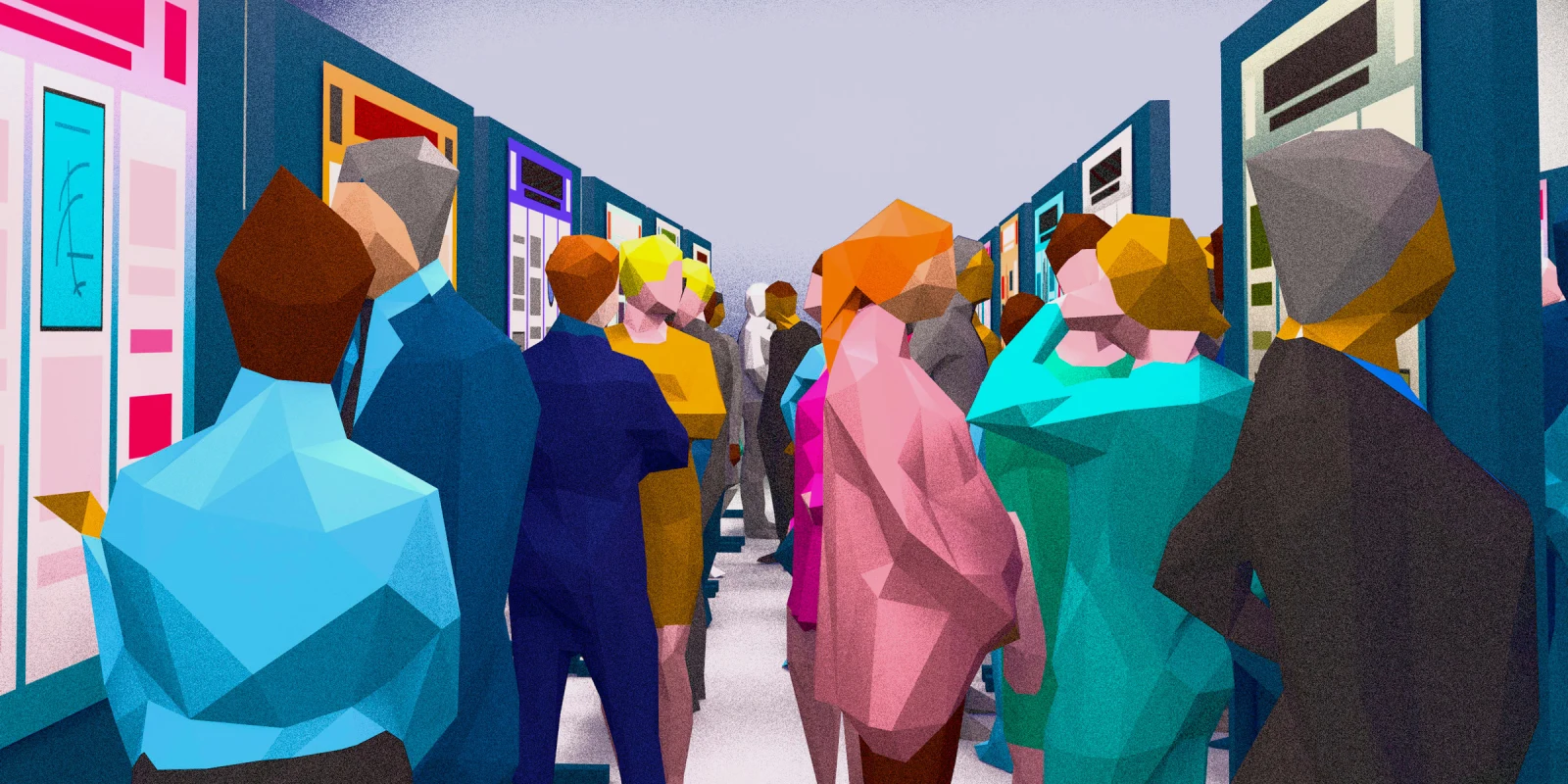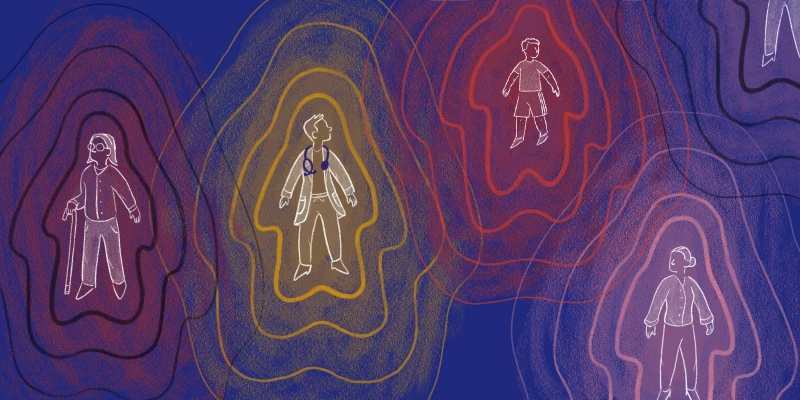Are you presenting? Is this your first or fifth presentation? Here are some tips and tricks to keep in mind when attending annual scientific meetings as presenters/co-authors.
Think Outside The Box
In terms of designing the poster, always think outside the box. The conference website usually has instructions to guide you, so make sure to read all the resources posted online before you begin. Over time I’ve learned that sometimes, it’s okay to color outside of the lines. Thinking outside the box and going against “traditional norms” got me to the Presidential Poster Award this year at the 2023 ACG Conference. What helped me was that I tend to focus more on visualizations and capturing the audiences’ eye as they walk by quickly through the poster sessions at the convention center. Try to make your poster stand out where someone can scan it while walking down and get the gist of it in 10 seconds! Less is more – less text on the poster itself and more images can sometimes be key to making your poster stand out from the rest! I’ve also learned from my predecessors that you can also bold your conclusion statement on the poster so that it stands out and the readers can see it quickly and move-on to the next poster while absorbing the crux of the study.
Be aware of those with Red-Green Colorblindness
Do not use the colors red or green on any presentations whether plenary or poster, to be mindful for those with colorblindness. One of my surgical mentors advised me on this concept during my very first surgical conference as a presenter and it stuck with me until today. Blue or black ink is always a safe color option to choose!
Practice, practice, practice
Write out a script and practice with your preceptor. Practice with attendings in your department and present at a grand rounds meeting prior to the conference. Getting feedback from a room full of experts and senior physicians is the best learning tool and impactful way to tweak your presentation for the better! When you’re practicing, make it as real as possible and simulated to a real-time scenario. For example, in order to put yourself in that environment, wear a suit, stand, and time yourself during your practice presentation.
Adjust your speaking tone & make eye contact
For those who suffer from monotone voice (guilty!), as scientists or doctors, we are not always animated actors but public speaking and fine tuning your voice is a skillset that can be acquired/learned and improved with more experience and critical feedback over time. Record yourself speaking and see where you can drop your tone lower or higher as needed. Evaluate yourself and have a mentor review the audio on where you can change your pitch during certain statements to enunciate the message more clearly or emphasize certain phrases over others to make key points. One tip a program director gave me once was to just be myself when I was speaking and enunciate my presentation as if I was talking to him normally and we were just having a conversation and that simple advice went far. I’ve also always been taught by my mentors that when you’re presenting, it’s better to speak slower than faster although you may think it’s counterintuitive – always slow down and pause between sentences. Engage the audience by making eye-contact and not reading off of your poster or screen but looking out at the audience is important.
Meditate prior to your plenary or poster session
Guided meditation is always helpful before presenting. One example that I’ve been taught is to visualize a light beam, of your favorite color choice and then a powerful or symbolic character of your being, anyone you can imagine. Then envision that symbolic character holding the light beam with your favorite color and having the light burst out of your chest and fill you with power and strength while clenching your fists and closing your eyes. This hypnotic technique can help calm any nerves before giving a lecture and clear your mind.
Overall logistics and travel tips for comfort and extra ease
You are already presenting which is anxiety provoking enough – so you want to reduce any other measures and make your travel and time at the conference as smooth as possible. It’s always professional to wear a suit. For women, carrying an extra pair of shoes in addition to the heels can be a life saver! Always take a backpack with you that you can keep next to your poster display. Try to stay at the hotel nearest to the convention center to avoid extra transportation fees such as getting to and from the conference for the week. Also, if you’re flying out-of-state or out of the country, always consider pre-ordering a poster hanging service fee offered by the conference such as Genigraphics, to have your poster hung before you get there so you don’t have to worry about carrying it on the plane or rushing to hang it on the day of your presentation. Avoid getting coffee at the conference and look for a place near your hotel room to avoid the rush and lines on presentation day. Some vendors at the convention will also provide free coffee or tea at the booths, so if you don’t mind the wait then it is worth it!
Network and step outside your comfort zone
Don’t just stand at your poster. Make conversation with those around you, visit your peers’ posters and ask them questions as well. You don’t know who the judge or reviewer is when they walk by your poster (most times) so treat everyone as if they are a judge and present your poster the same way you would be as if you were speaking to the judge. This can not only be a good networking and social tool but can help rid your butterflies knowing that everyone around you is also somewhat nervous and you speaking to them about your poster can actually help you practice and fine tune your presentation. You may make new friends at the conference who will become colleagues that you can explore the visiting city with and possibly attend future conferences together! Download the conference app beforehand and read through abstract names, lectures, or symposiums, and mark which spark your interest and curiosity to attend. Attend presentations or simulation sessions outside of your specialty to gain more exposure and knowledge. Step outside of your comfort zone and challenge yourself to learn more. Don’t just attend conference events but attend the nighttime event such as the Residents dinner or any other vendor or special events.
Safety
If you are traveling in another country, when you’re in an Uber or Lyft, I always open my navigation and make sure it is parallel or aligned with the rideshare app to make sure the driver is going to the precise location. As a woman, I always inspect my surroundings and usually leave the window half open during the drive, just in case if I am traveling a long distance in a rural or isolated area. I keep my purse on me at all times, and never put it in the back with my luggage.
Pack light!
I never check a bag when I’m flying for conferences. I usually tend to fly with one small carry-on luggage and a sports backpack which counts as your personal item. This makes your overall flight experience faster to avoid time waiting at the baggage claim.
Network, Connect, be approachable!
Don’t turn your back on your poster, stand facing others as they walk-by. Talk to the authors standing directly next to you and across from you. You are surrounded by other doctors and it’s always interesting to share hospital stories and experiences based on what state or country you are working in while you are standing and waiting for others to approach your poster. Who knows, you may make a new friend and go kayaking or biking or grab dinner once the session is over. So keep an open mind, you never know who you are going to meet or bump into! You may even see other doctors you interviewed with or haven’t seen since medical school!
Finally, above all else, have fun! These conferences are also made to be fun and make learning science fun. It is a privilege to be in a room full of like-minded individuals and grow and expand beyond the threshold of what we hold ourselves too.
Illustration by Jennifer Bogartz






